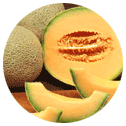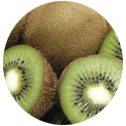 Full List of Fruits
Full List of Fruits  Manila Tamarind
Manila TamarindManila Tamarind
![]() Introduction of Manila Tamarind
Introduction of Manila Tamarind
Scientific name - Pithecellobium dulce
Pithecellobium dulce is a genus of flowering plant in the pea family Fabaceae that is inhabitant to the pacific coast and flanking highlands of Mexico, Northern South America and Central America. Known by several other common names such as Manila tamarind, black bead, Madras thorn, sweet Inga, opiuma and much more, in the region of Hawaii, it is considered as an invasive species.
The fruits are red-pinkish to greenish-brown in color. It is a multipurpose tree with edible with edible and indehiscent pods. Pods are rather thin, with a size ranging from 10-15 cm long x 1-2 cm wide, and set in a spiral of 1 to 3 whorls. Each pod contains 10 seeds, which are flattened, black and shiny. They are 1cm in diameter. The edible pods contain a thick fairly sweet acidic pulp. The fruit can be consumed raw or processed into a soft drink like lemonade. Oil extracted from the seeds is used in soap making and also for cooking.
![]() Nutritional Value of Manila Tamarind
Nutritional Value of Manila Tamarind
| Nutritions | value |
| Energy | 78 kcal |
| Water | 77.8% |
| Protein | 3% |
| Fat | .4% |
| Carb | 18.2% |
| Fiber | 1.2% |
| Ash | .6% |
| Calcium (1.3% RDI) | 13 mg |
| Phosphorous (4.2% RDI) | 42mg |
| Iron (2.7% RDI) | .5mg |
| Sodium | 19mg |
| Potassium (6.3% RDI) | 222mg |
| Vitamin A | 15mg |
| Thiamin/B1 (16.6% RDI) | .24mg |
| Riboflavin/B2 (5.8% RDI) | .10mg |
| Niacin/B6 (3% RDI) | .60mg |
| Vitamin C (221% RDI) | 133mg |
![]() Health Benefits of Manila Tamarind
Health Benefits of Manila Tamarind
The bark and pulp being is astringent and hemostatic, they are used for a wide ranging of treating options. Bark extracts are used for chronic diarrhea, dysentery and tuberculosis. An extract of the leaves is used to prevent spontaneous abortion and for gall ailments. Ground seed is used for ulcers. The leaves of the tree are used to treat certain conditions. They are used to treat both open and closed wounds.
Indigenous folks of Mesoamerica used the pulp and bark to treat:
![]() Gum ailments
Gum ailments
![]() Toothache
Toothache
![]() Hemorrhages
Hemorrhages
The fruit is sweet to taste, musky and acidic, simply resembling desiccated coconut meat. With a flavor that varies considerably, the flesh of the fruit melts on the tongue and it has a chewy, doughy, wispy and mildly grainy texture. Just like tamarind, the fruit has a shiny black seed surrounding the flesh, but they are not edible. Of the two types of fruit, the red-fleshed option is sweeter, while the white fruits may cause mild throat irritation.
Manila Tamarind can also be frozen for up to one year. To freeze the fruit, first wash and dry it, then cut it into small pieces. Place the pieces on a tray and freeze them for a few hours. Once the pieces are frozen, place them in an airtight container or bag and store in the freezer.
Manila Tamarind can also be canned and preserved for long-term storage. To can the fruit, first wash and dry it, then cut it into small pieces. Place the pieces in a sterilized jar and top with a canning syrup. Process in a boiling-water bath for 10 to 15 minutes, then store in a cool and dry place.
Manila Tamarind can also be dried and powdered, which helps to extend its shelf life. To dry the fruit, first wash and dry it, then cut it into small pieces. Place the pieces on a tray and dry them in the sun for 1 to 2 days. Once the pieces are dry, grind them into a powder and store in an airtight container.
Manila Tamarind is a versatile fruit that can be used in a variety of dishes. Its sweet and acidic flavor makes it a great addition to curries, sauces, chutneys, and preserves. It is also a good source of vitamins, minerals, and dietary fiber, making it an excellent choice for those looking to add a nutritional boost to their diet.
The tree is best grown in full sun and has the capability to ensure exceedingly hot conditions above 40°C; on the other hand, it can also tolerate a cold condition that is less than 5°C provide it is not long-drawn-out. Coming to the soil part, it can tolerate a great diversity of soil types, however does well in deep, well drained soils. It cannot withstand cold and wet soil. They are drought tolerant.
Seed propagation is the most common method for cultivating Manila tamarind. The seeds should be collected from healthy, mature fruit and stored in a cool, dry place until ready for planting. The seeds should be lightly scarified before planting, which will help to speed up germination. Sow the seeds in a warm, sunny spot and water regularly until the seedlings emerge.
Cuttings are another option for propagating Manila tamarind. Take cuttings from healthy, mature branches and remove any leaves. Dip the cuttings in a rooting hormone before planting in a pot filled with moist, well-draining soil. Place the pot in a warm, sunny spot and keep the soil moist until the cuttings take root.
Manila tamarind is a fast-growing tree, so it requires plenty of space to reach its full potential. It prefers full sun and well-drained soil, and is tolerant of a wide range of soil types. It is also highly drought tolerant and can survive periods of water scarcity.
Once established, Manila tamarind is relatively low maintenance. It is not prone to pests or diseases and does not require regular pruning or fertilization. The tree should be watered regularly during periods of drought and mulched to conserve moisture.
Manila tamarind is a valuable source of food, fuel, and shade in the Philippines. Its fruits are popularly used in Filipino cuisine, while the wood is used to make charcoal and furniture. The tree's fast growth rate and drought tolerance make it an ideal choice for reforestation projects in tropical climates. Propagation of Manila tamarind is easy and rewarding, making it a great choice for gardeners of all levels.


















